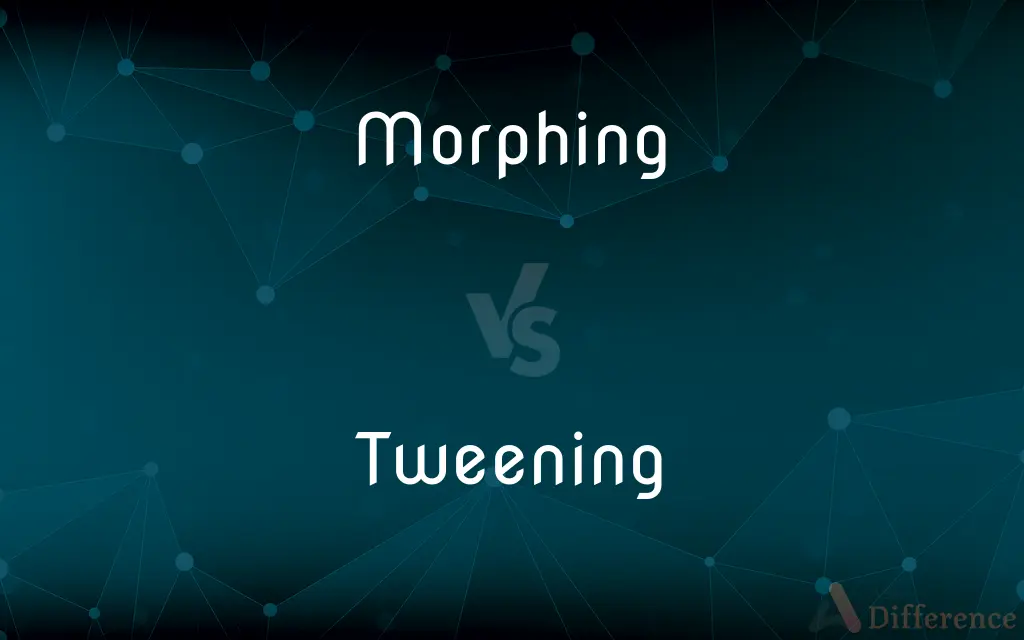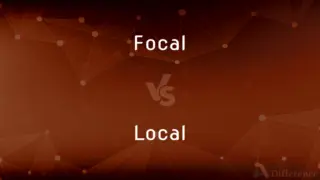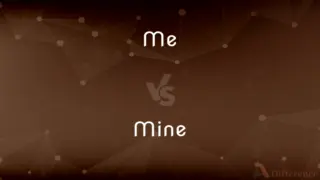Morphing vs. Tweening — What's the Difference?
By Tayyaba Rehman & Maham Liaqat — Updated on April 29, 2024
Morphing involves seamlessly transitioning one image into another using a series of steps, while tweening refers to the process of generating intermediate frames between two images or animations to create the illusion of motion.

Difference Between Morphing and Tweening
Table of Contents
ADVERTISEMENT
Key Differences
Morphing is used in graphics and animation to transform one image into another in a smooth, continuous motion, typically involving changes in shape and features. Whereas, tweening, short for in-betweening, is a technique used in animation to create intermediate frames between two key frames to produce the illusion of movement or transformation.
Morphing requires a more complex algorithm that finds and interpolates the corresponding points between the source and target images. On the other hand, tweening primarily deals with linear or simple transformations of objects from one position or shape to another without altering the fundamental structure.
Morphing can often be seen in movies and music videos where one character's face changes into another, while tweening is extensively used in traditional and computer animation to smooth transitions between frames.
While morphing alters the entire essence of an image into another, tweening usually maintains the continuity of an animation sequence without drastic changes in the visual identity.
In morphing, the end result is often a surprising new image that bears traits of both original images, whereas tweening aims to maintain a coherent flow in animation, ensuring the movement is believable and fluid.
ADVERTISEMENT
Comparison Chart
Definition
Transformation of one image into another.
Creation of intermediate frames in animation.
Use Case
Films, music videos.
Animation films, cartoons.
Complexity
High, complex algorithms.
Lower, simpler processes.
Visual Change
Significant, complete transformation.
Minimal, maintains visual continuity.
Result
New image with combined features.
Smooth motion or transformation between frames.
Compare with Definitions
Morphing
Transformation between images.
Morphing technology allowed the filmmaker to seamlessly transform a tiger into a dragon.
Tweening
Key tool in computer animation.
Tweening algorithms can automate the animation process, making it more efficient.
Morphing
Gradual metamorphosis in digital graphics.
The artist used morphing to create a sequence where a leaf slowly turned into a bird.
Tweening
Used to simulate motion.
By using tweening, animators reduced the need to draw every frame by hand.
Morphing
Blending of multiple images.
His latest graphic project involves morphing faces of various historical figures.
Tweening
Animation process of generating intermediate frames.
Tweening helped create fluid motion in the cartoon series.
Morphing
Used in visual effects.
Morphing effects in the movie were so smooth that changes were almost imperceptible.
Tweening
Bridge between key frames.
Tweening bridges the gap between the jump and the landing in the animation.
Morphing
Digital animation technique.
Morphing in animation has revolutionized how stories are visually told.
Tweening
Enhances animation smoothness.
The software uses advanced tweening techniques to ensure animations are smooth.
Morphing
Morphing is a special effect in motion pictures and animations that changes (or morphs) one image or shape into another through a seamless transition. Traditionally such a depiction would be achieved through dissolving techniques on film.
Tweening
(animation) A technique in film animation for generating intermediate frames such that one image evolves smoothly into the next.
Morphing
To transform (an image) by computer
Cinematic special effects that morphed the villain into a snake.
Tweening
Present participle of tween
Morphing
To be transformed
"By morning all his hurt feelings had morphed into mischief" (Dana Adam Shapiro).
Morphing
Present participle of morph
Morphing
(computing) The smooth transformation of one image into another using digital tweening.
Common Curiosities
Is morphing more complex than tweening?
Yes, morphing is generally more complex than tweening because it involves significant changes in image structure and details.
How does tweening facilitate animation?
Tweening facilitates animation by automatically generating intermediate frames between two key frames, creating the illusion of motion or transformation.
What types of animations benefit most from tweening?
Traditional 2D animations and computer-generated animations benefit most from tweening, as it helps create fluid motion sequences.
How do software programs handle tweening?
Software programs handle tweening by interpolating properties like position, scale, and rotation between two key frames.
Are there specific tools designed for morphing?
Yes, there are specific graphics and visual effects software tools designed to handle morphing, such as Adobe After Effects.
Can morphing be used in live-action films?
Yes, morphing is often used in live-action films to create special effects, such as transforming a human face into a mythical creature.
What is morphing in digital graphics?
Morphing in digital graphics refers to the process of smoothly transforming one image into another, combining aspects of both.
Does tweening reduce the workload in animation production?
Yes, tweening can significantly reduce the workload in animation production by minimizing the number of frames that need to be manually created.
What skills are needed to effectively use morphing?
Effective use of morphing requires skills in software that supports this feature, a good eye for detail, and understanding of motion dynamics.
Are there any industries besides entertainment where morphing is used?
Besides entertainment, morphing is used in simulation training, such as in medical or military simulations, to create varied scenarios.
What is the future of tweening in animation?
The future of tweening in animation involves more advanced algorithms and AI integration, making animations even more lifelike and efficient.
What is a practical example of tweening in web design?
In web design, tweening is used to animate transitions between slides in a slideshow or movements in interactive elements.
How does morphing affect the storytelling in movies?
Morphing can dramatically enhance storytelling in movies by allowing for visual transformations that symbolize or suggest thematic shifts.
How does the output of morphing compare to that of traditional blending techniques?
The output of morphing is typically more dynamic and visually interesting compared to traditional blending techniques, which are often more static.
Can tweening be applied in 3D animation?
Yes, tweening is also applicable in 3D animation to interpolate between key poses of 3D models, aiding in creating smooth animations.
Share Your Discovery

Previous Comparison
Focal vs. Local
Next Comparison
Me vs. MineAuthor Spotlight
Written by
Tayyaba RehmanTayyaba Rehman is a distinguished writer, currently serving as a primary contributor to askdifference.com. As a researcher in semantics and etymology, Tayyaba's passion for the complexity of languages and their distinctions has found a perfect home on the platform. Tayyaba delves into the intricacies of language, distinguishing between commonly confused words and phrases, thereby providing clarity for readers worldwide.
Co-written by
Maham Liaqat















































